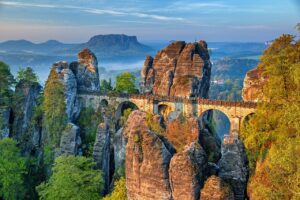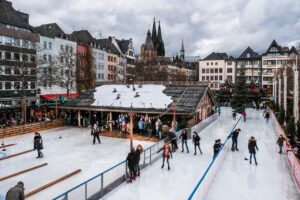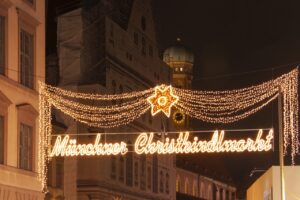Germany’s Autobahn is more than just a high-speed highway—it’s a gateway to some of the country’s most stunning landscapes, historic towns, and cultural landmarks. Whether you’re a first-time traveler or a seasoned visitor, exploring Germany via the Autobahn offers a unique blend of adventure and discovery. This guide highlights the must-see stops … [Read more...]
The Autobahn: Facts and Myths of Germany’s High-Speed Highways
The Autobahn stands as an emblem of German engineering prowess and efficiency, famous worldwide for sections without speed limits and a reputation for safety and precision. However, numerous myths surround this extensive network. This article seeks to clarify these myths, presenting a clear view of the Autobahn's real character and its impact on … [Read more...]
Safety on the Autobahn
The Autobahn, Germany's famed highway system, is renowned not only for its sections without speed limits but also for its impressive safety record. This article explores the various Autobahn safety measures, laws, and technologies that contribute to making the Autobahn a model of road safety. Traffic Laws and Regulations Germany's approach to … [Read more...]
German Table Manners – Tischmanieren: A Guide to Dining Etiquette in Germany
When traveling to Germany or dining with German friends, understanding the local table manners can enhance your experience and show respect for cultural norms. German table manners, or "Tischmanieren," reflect the country's values of order, respect, and formality. In this comprehensive guide, we explore the essential aspects of dining etiquette in … [Read more...]
Dining Etiquette in Germany: A Guide to Proper Table Manners
Dining out or being invited to a meal in Germany can be a delightful experience, enriched by age-old traditions and customs that reflect the country’s rich cultural heritage. Understanding and adhering to German dining etiquette can greatly enhance your dining experience, whether you're a tourist, a business traveler, or an expatriate. This … [Read more...]
Liebfraumilch Wine: Discovering Germany’s Sweet Secret
Nestled in the heart of Germany's winemaking regions lies a sweet secret that has charmed palates for centuries: Liebfraumilch wine. This delectable white wine, known for its smooth, fruity flavor, has a history as rich as its taste. In this article, we'll embark on a journey through the vineyards of Germany, uncovering the history, production, and … [Read more...]
The Enchanting World of German Eiswein: A Journey Through Ice Wine Excellence
German Eiswein, or ice wine, represents a pinnacle of winemaking, a harmonious blend of nature's whimsy and human craftsmanship. This luxurious and rare dessert wine, born from grapes frozen on the vine, is a testament to the patience and skill of German vintners. In this comprehensive guide, we'll explore the historical roots, intricate production … [Read more...]
Exploring the Magic of the Cologne Christmas Market: A Festive Journey
As the festive season approaches, the city of Cologne transforms into a winter wonderland, with its renowned Christmas Market taking center stage. This article explores the magical allure of the Cologne Christmas Market, a place where traditional German holiday charm, unique gift ideas, and delightful culinary treats come together to create an … [Read more...]
The Magic of the Munich Christmas Market: A Festive Wonderland
As the festive season approaches, the Munich Christmas Market, or "Christkindlmarkt," stands out as a beacon of holiday cheer and tradition. Nestled in the heart of Bavaria, Germany, this market is not just a destination; it's an immersive experience that captures the essence of Christmas. In this article, we'll explore the magic of the Munich … [Read more...]
Nuremberg Christmas Market: A Timeless Winter Wonderland
The Nuremberg Christmas Market, known locally as the Christkindlesmarkt, is a beacon of festive spirit and one of the oldest and most famous Christmas markets in the world. This article delves into the enchanting atmosphere of the market, exploring its history, unique offerings, and providing essential tips for visitors. The Historical Charm of … [Read more...]
- « Previous Page
- 1
- 2
- 3
- 4
- …
- 9
- Next Page »









